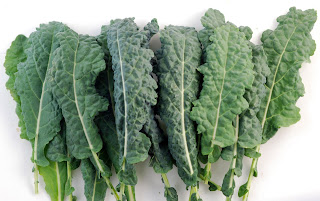 |
| Bello Gennaro |
There’s a small Italian restaurant around the corner from me
called Gennaro. It’s been there for close to 20 years, owned by a neighborhood guy named, you
guessed it, Gennaro. It’s the definition of a great neighborhood restaurant: warm
and welcoming, great food, no reservations, excellent wine list, and a wait
staff that hasn’t changed much in all these years (a sure sign of a well-run
establishment). Plus, every member of my opinionated food-loving family loves
it. So we go there. A lot.
Gennaro is from an island off the coast of an island, Lipari,
off of Sicily. The restaurant’s menu is more varied than the typical red sauce
place, but not as esoteric as some of the city’s more upscale Italian joints.
It manages to perfectly satisfy my pasta-worshipping red-sauce-addicted kids
and my tomato-sauce-makes-me-scream self. They make incredibly delicious lamb chops (I'm a sucker for anything lamb). Plus, there are about 20 specials
every night, which the waiters manage to remember and rattle off without a
hitch every single time.
But perhaps the thing I am most grateful to Gennaro for, is
that he has changed my mind about kale. Kale, in my college years, was the
ultimate flower child veggie: healthy, crunchy, wholesome, disgusting. We could
grow it on the commune, we could bake it into pies (we did, really), we could
mix it with cheap rice and cheap pasta from the food co-op. Whatever we did
with kale, it remained chewy, bitter, and revolting.
 |
| Bello lacinato kale |
Until we met Gennaro’s kale. His insalata di cavolo nero
with currants, pine nuts, balsamic vinegar, and ricotta salata was a whole new
green revelation: sharp, vivid, vinegary, tart, sweet—sexy kale. Reason one: He
uses lacinato kale, which is regular curly kale’s hipper, more sophisticated
cousin. Lacinato kale is so cool that it has more names than this guy: dinosaur
kale, Tuscan kale, black kale, Italian kale, Tuscan cabbage, palm tree kale,
black Tuscan palm, which is regular old curly kale’s hipper, more sophisticated
cousin.
Reason two to love Gennaro’s kale salad: the dressing, which
both tames the bitter in the kale and adds a jolt of sweet-tart that makes the
whole thing more so good that my figlio minore, who
has never—and I’m not exaggerating here—met a green vegetable worth eating,
will happily have seconds, even thirds. And the figlio maggiore not only likes
it, he actually requests it be made for him when he’s home.
 |
| Bello kale salad |
After enjoying it at the restaurant a few times, I decided I
had to attempt to replicate the dish at home. After many failed experiments,
I think I finally got it right. It may not be exactly the magic they serve at
Gennaro’s, but it’s pretty damn close. Since I rarely have ricotta salata on
hand, I use shaved parmesan. And I’ve substituted dried cranberries and golden
raisins for the currants with good results (although the smaller currants look
prettier). I’ve also used walnuts when pine nuts are scarce (or too expensive).
Pine nuts are best (and nothing smells as good as toasting pine nuts) but
walnuts, even slivered almonds, are fine substitutes.
Please try it, even if you hate kale. I used to. And then I
met Gennaro.
Kale Salad
2 TB dried currants (or cranberries, or golden raisins, or
raisins)
3 TB white balsamic vinegar (adjust to your taste)
1 TB unseasoned rice vinegar
1 TB honey (adjust to your taste)
1 TB extra-virgin olive oil
1 tsp salt
2 bunches Tuscan kale (about 1 pound)
2 TB pine nuts
Shavings of ricotta salata or parmesan
- Let the currents soak in the vinegar for a few minutes to plump (they can soak all day or even overnight if you like).
- Remove center ribs and stems from the kale, thinly slice crosswise.
- Lightly toast the pine nuts till golden.
- Whisk the vinegars, honey, oil, salt. Add the kale and currants; toss to coat. Let macinate 20 minutes at room temperature, tossing occasionally.
- Season to taste with salt and pepper, stir in pine nuts, serve topped with cheese shavings.



















